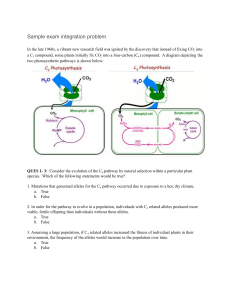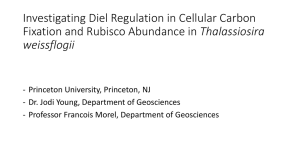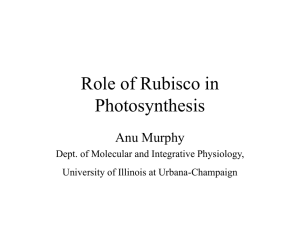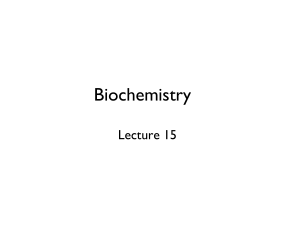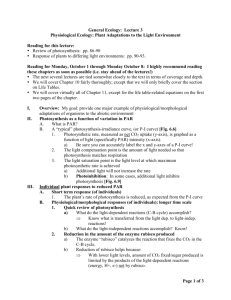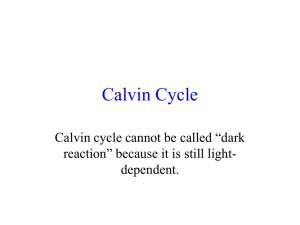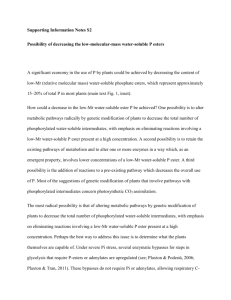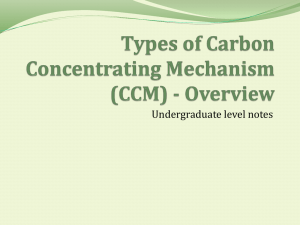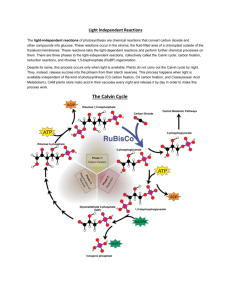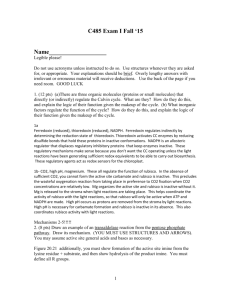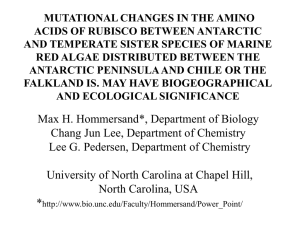Photosynthetic and Atmospheric Evolution
advertisement
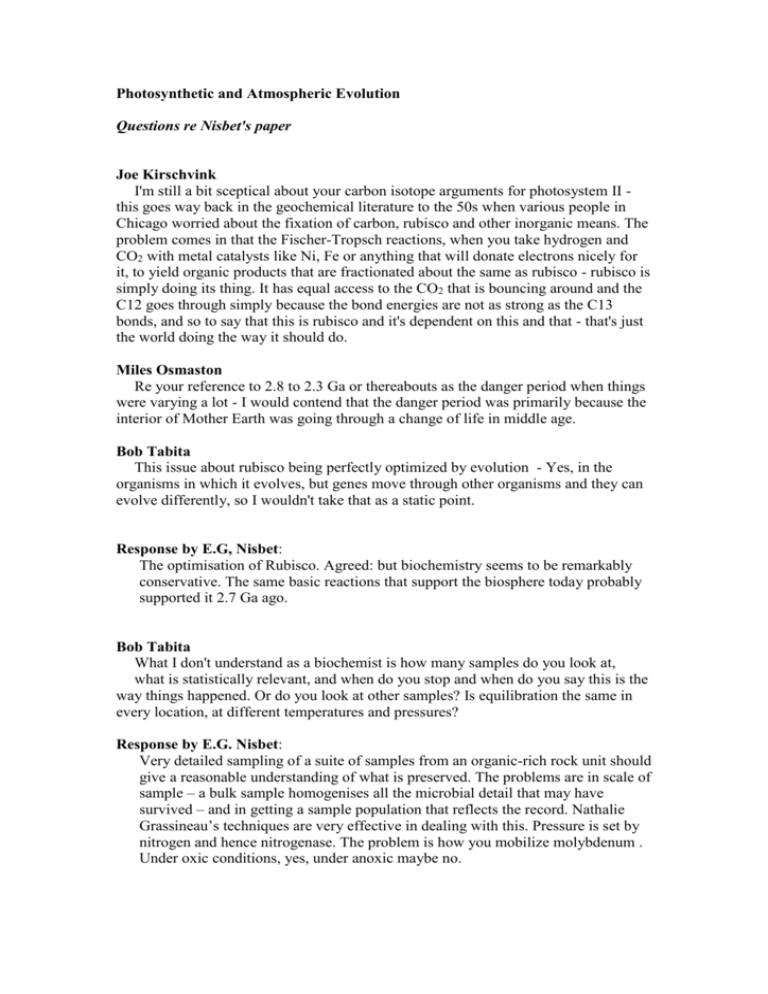
Photosynthetic and Atmospheric Evolution Questions re Nisbet's paper Joe Kirschvink I'm still a bit sceptical about your carbon isotope arguments for photosystem II this goes way back in the geochemical literature to the 50s when various people in Chicago worried about the fixation of carbon, rubisco and other inorganic means. The problem comes in that the Fischer-Tropsch reactions, when you take hydrogen and CO2 with metal catalysts like Ni, Fe or anything that will donate electrons nicely for it, to yield organic products that are fractionated about the same as rubisco - rubisco is simply doing its thing. It has equal access to the CO2 that is bouncing around and the C12 goes through simply because the bond energies are not as strong as the C13 bonds, and so to say that this is rubisco and it's dependent on this and that - that's just the world doing the way it should do. Miles Osmaston Re your reference to 2.8 to 2.3 Ga or thereabouts as the danger period when things were varying a lot - I would contend that the danger period was primarily because the interior of Mother Earth was going through a change of life in middle age. Bob Tabita This issue about rubisco being perfectly optimized by evolution - Yes, in the organisms in which it evolves, but genes move through other organisms and they can evolve differently, so I wouldn't take that as a static point. Response by E.G, Nisbet: The optimisation of Rubisco. Agreed: but biochemistry seems to be remarkably conservative. The same basic reactions that support the biosphere today probably supported it 2.7 Ga ago. Bob Tabita What I don't understand as a biochemist is how many samples do you look at, what is statistically relevant, and when do you stop and when do you say this is the way things happened. Or do you look at other samples? Is equilibration the same in every location, at different temperatures and pressures? Response by E.G. Nisbet: Very detailed sampling of a suite of samples from an organic-rich rock unit should give a reasonable understanding of what is preserved. The problems are in scale of sample – a bulk sample homogenises all the microbial detail that may have survived – and in getting a sample population that reflects the record. Nathalie Grassineau’s techniques are very effective in dealing with this. Pressure is set by nitrogen and hence nitrogenase. The problem is how you mobilize molybdenum . Under oxic conditions, yes, under anoxic maybe no. Paul Falkowski That's a misconception. There are three nitrogenases. There's an iron-iron nitrogenase, a vanadium nitrogenase and a molybdenum nitrogenase. Under perfectly anaerobic conditions when molybdenum is a sulphide and is really inaccessible in the water column, for the most part, you don't have to say - we didn't have molybdenum so therefore nitrogen fixation didn't occur. Tony Larkum I want to make the point again about the timescale over which oxygen developed. To me it seems that that took a very long time - there was a great experimental development over millions of years. I see nothing in what you have said to dispute with that. So that your have the experiment starting on stromatolites and then you get the optimization of the oxygen evolution mechanism giving rise to the great oxygenation at the end of that period of about 2.3 Ga. Mark van der Giezen Is it not possible to do a rough calculation of how much oxygen a bacterium produces nowadays and the time you would need to fill the whole atmosphere, or have a good stab at how many reducing equivalents there were around the planet to be oxidized before oxygen levels could rise? Joe Kirschvink There is a big debate about whether many of these Archaean stromatolites might be direct precipitates from the sea water. I wanted to make the point that if so it seems that the ocean chemistry was much more towards saturation of the carbonate system than it is today. There are very few experiments of what anaerobic photosynthetic bugs do in that environment. We know that photosynthesis enhances carbonate precipitation, which is why if you go to Shark Bay these things are concrete - it's a process that's involved. One of our former students did an experiment as part of her thesis where she actually grew these photosynthetic purple bacteria in ocean water chemistry that mimicked the Archaean, or what the Archaean might have been, and the carbonate precipitation went up by a factor of 10. Howard Griffiths A point about stromatolites from the living plant perspective. I think you got a change of organic 13C from -10 ‰ at 2.2.8 Ga to -29 ‰ at 2.6 Ga or thereabouts. A shift in composition like that in modern day organisms or whatever could be brought about by three things: (i) diffusion limitation, entirely consistent with a reduction in discrimination; (ii) a different inherent fractionation factor being expressed by rubisco (cyanobacteria 18 ‰ and higher plants 28 ‰); (iii) the operation of a carbon concentrating mechanism.
